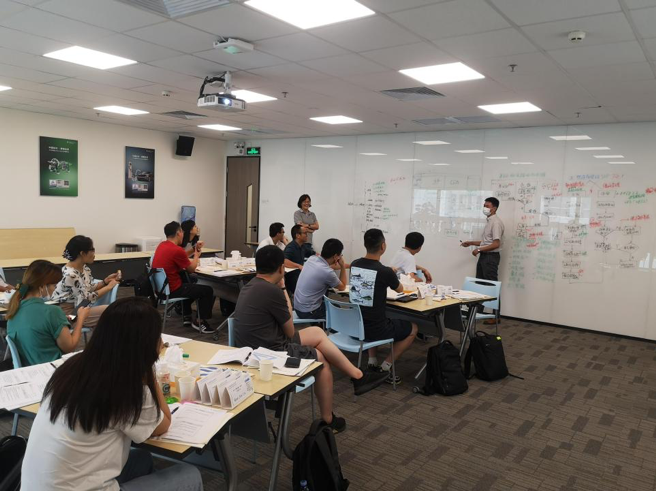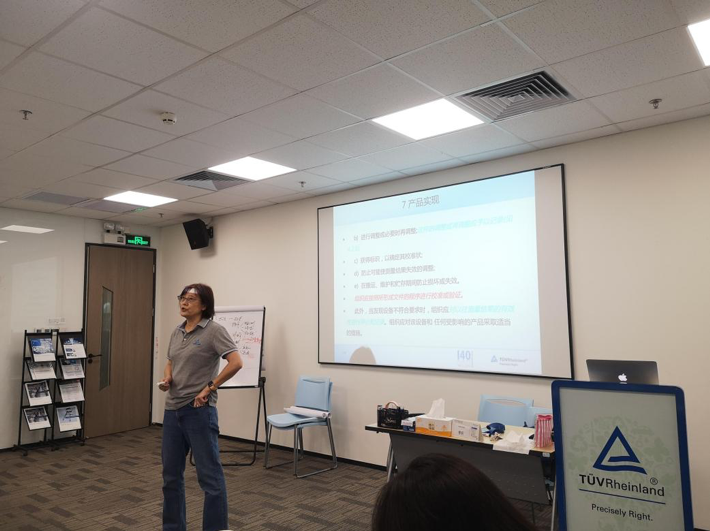LEARNING SOMETHING NEW IS ALWAYS GOOD
My thoughts during the ISO13485 Internal Auditor Training
This is the first time writing for the company blog, a little nervous. Upon joining Access-2-Healthcare, I was blessed to be sent for ISO13485 Internal Auditor Training right away to build up my knowledge to take on new challenges and tasks. A new job cannot have a better start than that.
On 1st September 2021, I underwent ISO13485 Quality Management System Internal Auditor Training at TUV Rheinland Shenzhen Office for 3 days. The aim of this training is to better understand the entire ISO 13485 related program content system, the process of the establishment of the rules and usage, to master the logic and methods of planning and implementing system audits, which will actively help with the follow-up work, especially Supplier management and review work.

Our training teacher Zheng Xin is a TUV Rheinland professional lecturer, with two decades of industry experience and has extensive experience in external audit.
On the first day of training, the trainees introduced themselves one by one to learn about the trainee’s company, position, industry background and requirements, which not only help to break the ice in the class, but also allow the lecturer to target teaching based on the characteristics of each trainee.
Through the three-day training, trainees first learned about the ISO 13485:2016 Quality Management System clauses one at a time and guide everyone on how to complete the entire audit process from Audit Initiation, on-site audit preparation, on-site audit implementation, audit report to corrective action verification. Finally, the requirement to pass the exam to evaluate the training effect.
Based on her years of experience, the Trainer interspersed with the training process auditor’s practical tips and tricks and the underlying logic of planning an audit. It was simple and humorous. Group exercises were also arranged during the period so that everyone can experience the main points of the audit in practice through teamwork.

Some Key Learnings
[table id=1 /]
Documentation
Documents can communicate intent and unify actions, facilitate repetition and traceability, provide objective evidence and basis for evaluation, and make it a value-added activity.
Quality records are a type of document.
Documents must be controlled.
Documents help to meet the requirements of industry regulations.
The Process Approach
A set of interrelated or interacting activities that transform inputs into outputs.
The project or task is disassembled into various processes, so that the analysis and problem solving can be systematically divided into different levels.
PDCA method
P – Plan: Establish and quantify goals and processes according to requirements.
D – Do: execute the work.
C – Check: according to requirements of the process monitor and measure and report the results.
A – Act: Take measures based on the ‘check’ and continuously improve.
The ” PDCA ” method is used in all processes.
5W2H method
Why – Why do it, confirm the demand.
What – What to do, determine the boundary of the problem.
Where – Where to do it, where to do it.
When – Determine the time and the connection time of each process.
Who – who is suitable for this job, who is the relevant person.
How – Optimization method to simplify the task.
How much – determine resources, improve methods.
Product Realization
Planning – determine the various stages of design and development, design review, verification, validation, and design transfer (technologists require intervention in research and development), responsibilities and authorities, etc.
Verification – confirmation that the specified requirements have been met by providing evidence, such as conversion methods, comparison of new design specifications with verified similar designs, etc.
Validation – the determination that the specific intended use or application requirements have been met. Medical device validation refers to clinical trials.
Risk management – specifically refers to the risk management of a product, which runs through the entire life cycle of the product, including four parts: risk analysis, risk assessment, risk control, and post-production information.

Through this training, I believe that in addition to being familiar with the clauses of ISO13485, by mastering the correct methods, with pragmatic, logical thinking, the auditor’s work can positively help enterprises grow, design, and produce safe and reliable medical products for consumers. Being from a sales and engineering background previously, I can now relate to the importance of quality and auditing to my past experiences and now put it into good use in the future.
Eight basic principles
- Focus on customer
- Leadership
- Active participation
- Process method: Identify and manage the processes applied by the organization and the interaction between processes.
- Systematic method of management: Identify, understand, and manage the process that constitutes the system to improve the effectiveness and efficiency of achieving goals.
- Continuous improvement
- Fact-based decision-making
- Mutually beneficial supplier relationships





